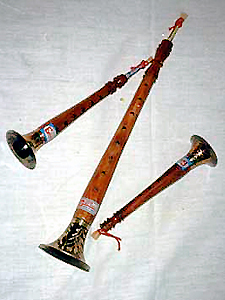
The seeds of cultural aspects spread throughout the world rapidly budding into new genres. These ideas intertwine and meld to provide the arts of today. During the creation of new works artists revisit the traditional styles as well as works in other cultures to create a collage of rhythmic, harmonic, and melodic ideas. This explains the usage of a constant drum beat, high usage of percussive instruments, and groggly voices chosen over pure, rich tones. Those concepts were not comprehensible to me until now. I have a new understanding of music, even why rap is considered music. There are also basic recurring factors that are now noticeable in all cultures including our own. This includes the cyclic aspect of nature transmitted through music. This would also explain why Da Capa Arias were so popular because they complete a circle by returning to the beginning. Another aspect is the importance of a constant beat. This may or may not have a distinct meter, but a solid beat is present underneath a complex rythmic, harmonic, or melodic texture.
It is rather challenging to distinguish one specific topic that absolutely intrigues me since the whole diverse musical experience captured my attention. However, surprisingly enough, the one thing that stands in my mind the most is the gamelon. This is particularly surprising to me since my least favorite instruments are the drums. However, the unique sounds render a fascinating atmosphere. At the first listening, they sound like two year olds in the kitchen, but the second listening reveals the complex rhythmic and melodic configuration. Altogether, it does sound peaceful as if wind is gently caressing the wind chimes that ring throughout a meadow.
I also love the warm tones of wooden instruments especially wooden flutes, and love any opportunities to absorb the gentle sound. Wooden instruments are used more frequently as traditional instruments around the world.
This class has enticed me to go the library and diverge myself in the Garland Encyclopedia of World Music. There are many countries that I would still like to learn more information, and it is impossible to cover everything about the world in one month. This class has also added another spark for an extreme interest in studying wooden flutes. Since these do not exist in the Northern American culture, I will have to study in a different country. Therefore, I will get to truly experience a different culture.
It is rather challenging to distinguish one specific topic that absolutely intrigues me since the whole diverse musical experience captured my attention. However, surprisingly enough, the one thing that stands in my mind the most is the gamelon. This is particularly surprising to me since my least favorite instruments are the drums. However, the unique sounds render a fascinating atmosphere. At the first listening, they sound like two year olds in the kitchen, but the second listening reveals the complex rhythmic and melodic configuration. Altogether, it does sound peaceful as if wind is gently caressing the wind chimes that ring throughout a meadow.
I also love the warm tones of wooden instruments especially wooden flutes, and love any opportunities to absorb the gentle sound. Wooden instruments are used more frequently as traditional instruments around the world.
This class has enticed me to go the library and diverge myself in the Garland Encyclopedia of World Music. There are many countries that I would still like to learn more information, and it is impossible to cover everything about the world in one month. This class has also added another spark for an extreme interest in studying wooden flutes. Since these do not exist in the Northern American culture, I will have to study in a different country. Therefore, I will get to truly experience a different culture.






